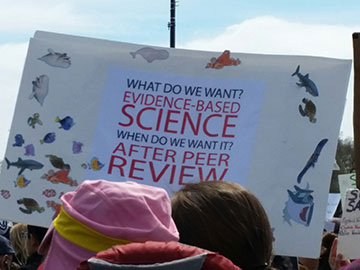
A sign from the march in Chicago, Ill., USA, which drew an estimated crowd of 40,000. [Image: Courtesy of R. Wills]
Editor’s note: Like many, OPN spent Saturday, 22 April 2017, at the March for Science—an international event, consisting of a rally and march in Washington, D.C., and some 610 “satellite marches” in other cities. Below, we offer some photographic impressions of the day, from both the D.C. event and several others. (If you have good shots from a local march to share with OPN’s audience, we’d love to see them; please send candidates to swills@osa.org.)
A wet day in Washington
The germ of the idea for a “march for science” in Washington, D.C., came in a comment on the online news site Reddit the day after the Women’s March of 21 January 2017. This very grassroots idea gathered considerable steam in the succeeding months, as well as more than 100 nonprofit-organization partners, including the American Association for the Advancement of Science, The Optical Society (OPN’s publisher), the American Physical Society, the American Geophysical Union, and others.
The planning and organization culminated in a free-wheeling rally and march, organized to coincide with the annual Earth Day rally on 22 April 2017. That day turned out to be a gray and rainy one, but participants in the event seemed to gain energy from that bit of (occasionally rather wet) adversity.
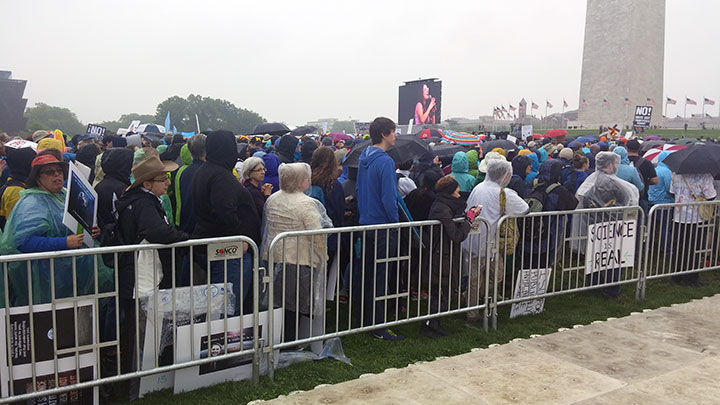
While the March for Science itself didn’t commence in Washington, D.C., until 2:00 p.m. Eastern U.S. time, crowds gathered early for the combined March/Earth Day rally north of the Washington Monument. This photo was taken at around 10:00 a.m.
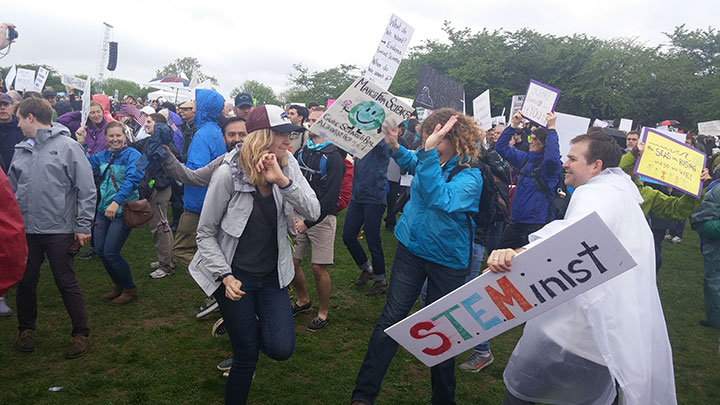
At a few minutes before the beginning of the march to the U.S. Capitol, the onstage band stoked the marchers into some impromptu dancing.
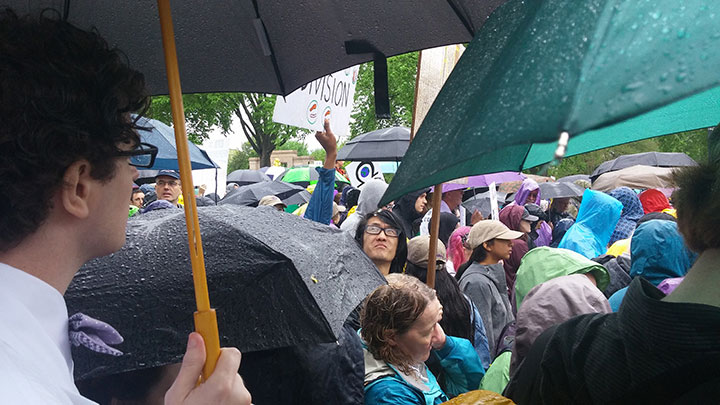
By the time the March for Science officially began, a steady rain was falling.
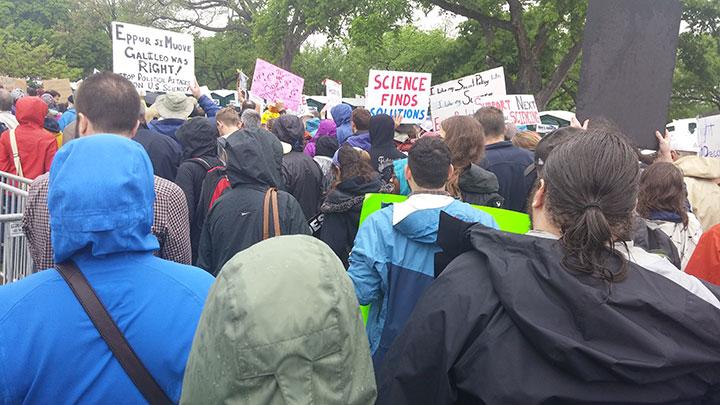
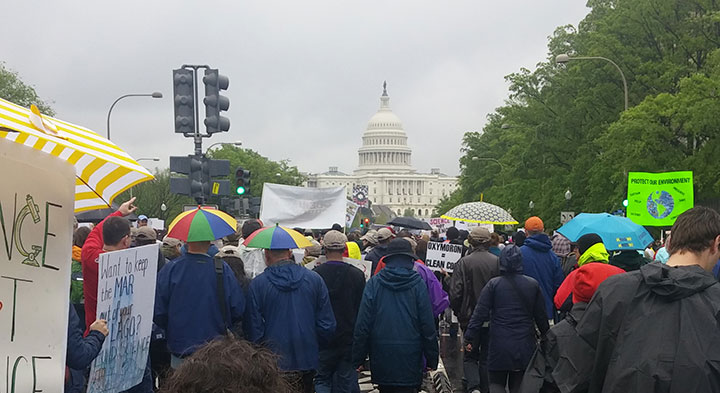
Participants in the March moved slowly out of the rally area near the Washington Monument, and proceeded east along the city’s Constitution and Pennsylvania avenues toward the U.S. Capitol.
Teachable moments
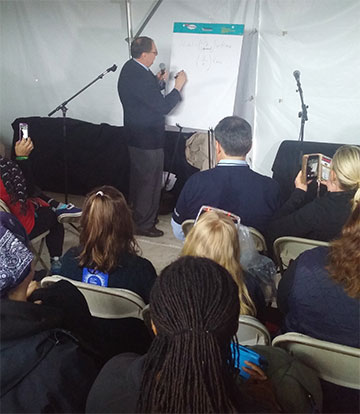
Jim Kakalios talked about the physics of superhero comics, and how those physics relate to everyday essentials like automotive airbags, in an OSA/APS-sponsored teach-in at the 22 April rally.
The morning before the March was a full one, including a variety of “teach-ins” at tents near the rally main stage. While many of the teach-ins focused on environmental themes, one of them—co-sponsored by APS and OSA—featured an entertaining talk by Jim Kakalios of the University of Minnesota on the “physics of superheroes.” (Kakalios, accustomed to doing his talk with slides, was dismayed to find that the teach-in tents provided no electricity; OSA and APS solved the problem by distributing the slides using a decided low-tech channel: ViewMaster viewers.)
Kakalios’ whimsical talk had point, however. Toward the talk’s end, he noted that when the theory of quantum mechanics was devised early in the 20th century, its pioneers, such as Niels Bohr and Erwin Schroedinger, couldn’t envision the advances, including lasers and digital data storage, to which the theory would lead.
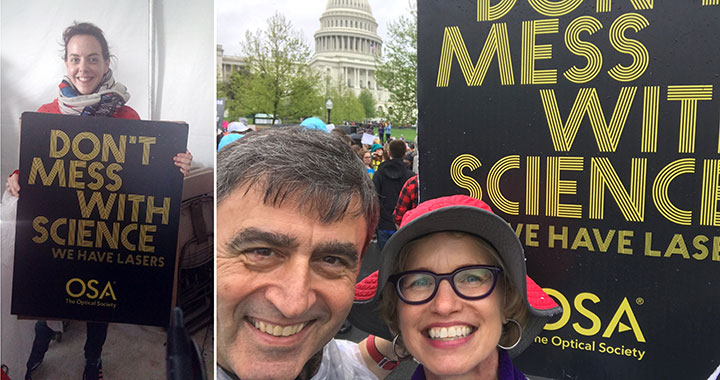
(Left) OSA Ambassador Arlene Smith of Avo Photonics. (Right) OSA 2017 President Eric Mazur and OSA chief executive Elizabeth Rogan, near the U.S. Capitol during the March for Science.
Indeed, the rally and march in general, in the view of many attendees, offered a classic “teachable moment” on the sometimes unexpected benefits of pure research. “It’s a great opportunity to make the general public aware of the amazing things” that science does, noted 2017 OSA Ambassador Arlene Smith of Avo Photonics. “Every device that you use, every tweet that you tweet—so much of it rests on science. It’s great to bring awareness for science; it’s great to promote it as fun, and not just boring or tedious.”
OSA President Eric Mazur echoed those sentiments. “For me, it’s an opportunity to reflect,” said Mazur. “When I think of the events that have led up to this March for Science, I think we should use it as a chance not only to stand up for science, but also to reflect on how the science community has to some degree failed to educate society” about science’s benefits.
A worldwide event
While the March for Science was initially conceived in the classic political mold of a “March on Washington,” it eventually spawned some 610 “satellite marches” in other cities. Here are a few snapshots from some of those events, courtesy of OPN freelance contributor Sarah Michaud in Vienna, Austria, and OSA Fellow Joseph Mait, who saw the march in Jena, Germany.
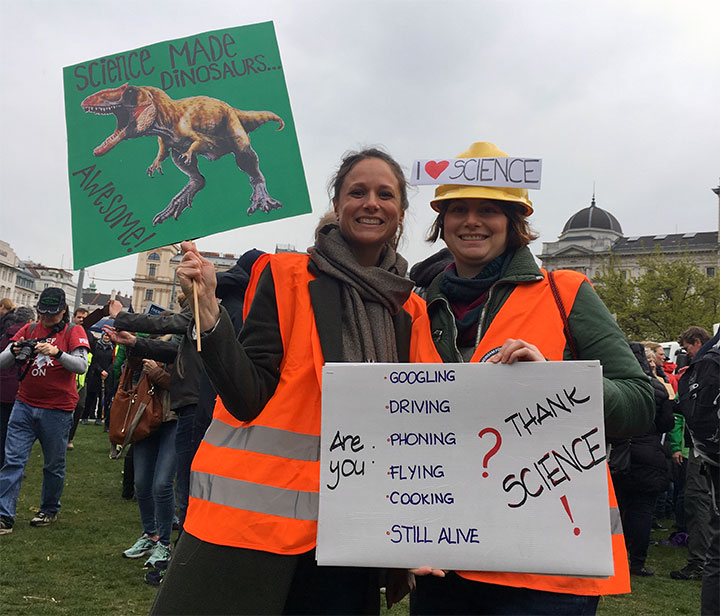
One of the Vienna march supporters, Laura Silverstein (left), a research assistant at TU Wien’s Institute for Discrete and Convex Geometry, holds a sign alluding to the Vienna march’s special guest: a walking allosaurus at the Vienna Natural History Museum. [Courtesy of S. Michaud]
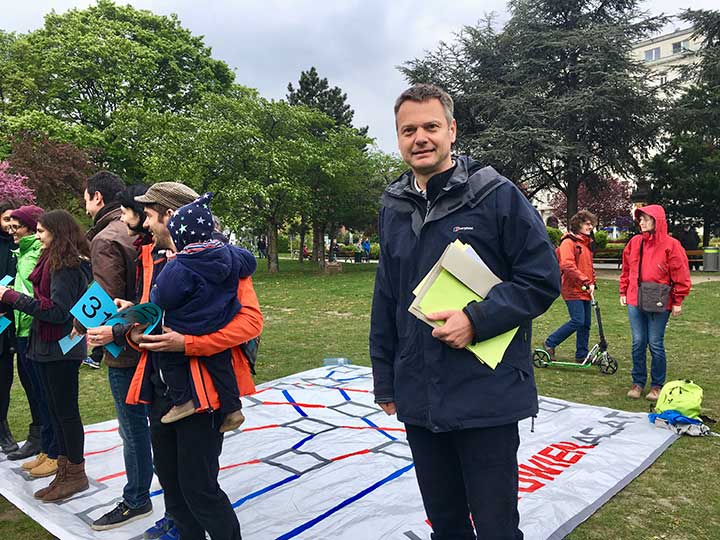
Stefan Szeider, professor at TU Wien and head of the Algorithms and Complexity Group, brought a Twister-like mat to the pre-march picnic to demonstrate how a sorting network algorithm works. [Courtesy of S. Michaud]
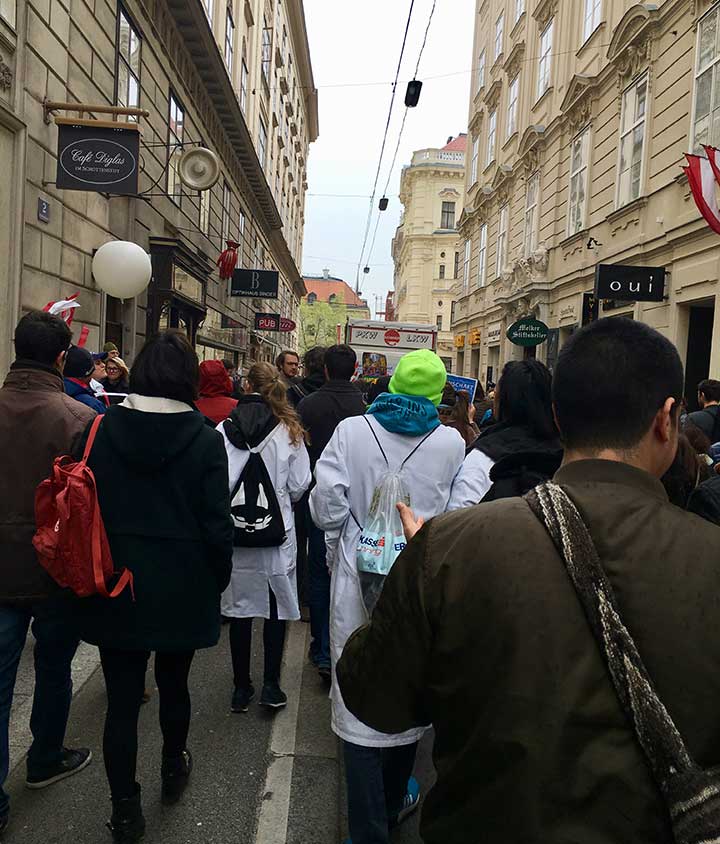
Participants in the Vienna satellite march move down a narrow street. [Courtesy of S. Michaud]
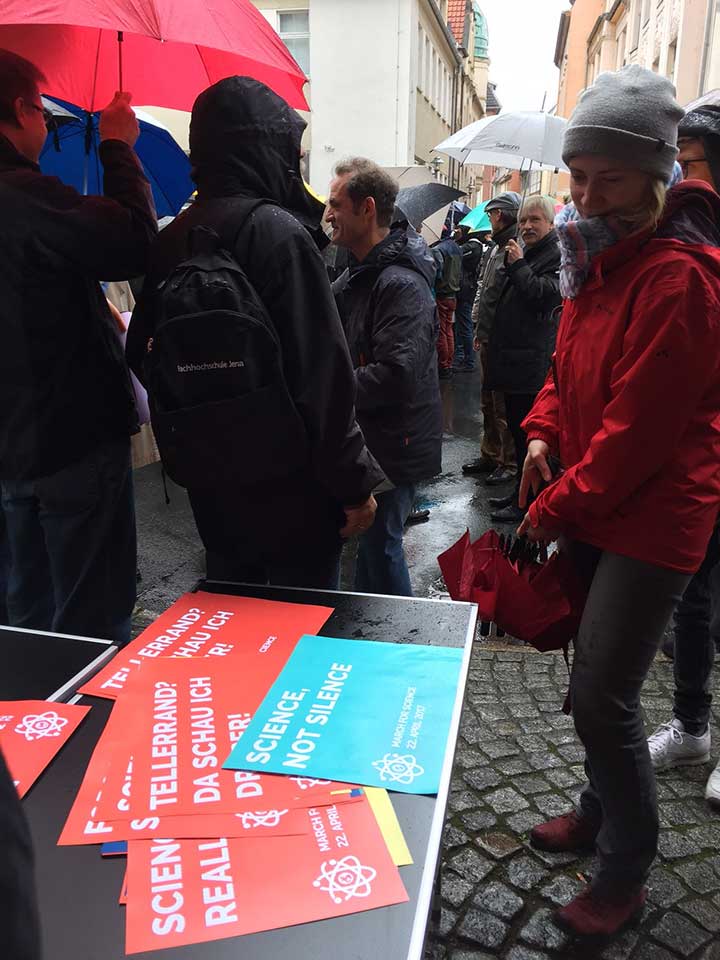
OSA Fellow Joseph Mait shared this picture from the satellite march in Jena, Germany. [Courtesy of J. Mait]
Signs of the times
An event like the March for Science is, of course, written largely in the signs and placards that people bring to the event. Slogans such as “Science, Not Silence,” were common, and—although the organizers were at pains to frame the event as nonpartisan—many of the placards had a decidedly political edge.
We close this whirlwind trip with a few signs that we saw (on the geekier end of the spectrum) that we particularly liked.
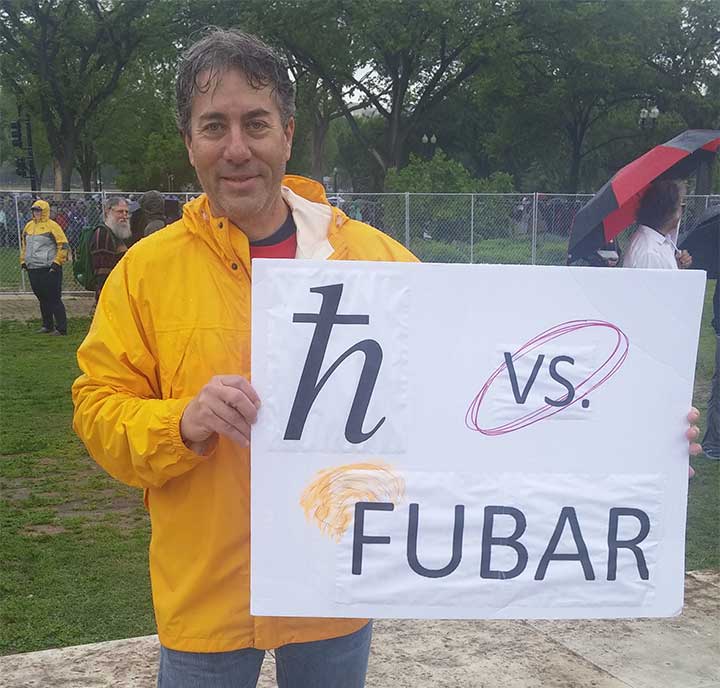
“H-bar versus FUBAR” was the message from OSA Fellow Howard Milchberg, part of a delegation from the University of Maryland. “I’m here for more basic reasons than just funding of science,” Milchberg noted, particularly citing distorted views of science and their impact on public discourse. “I’m offended by the lies being told,” he said.
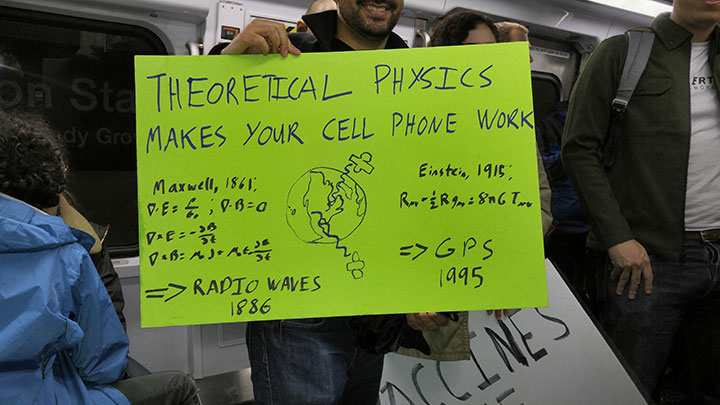
Seen on a train coming into Washington, D.C., for the March. [Courtesy of M. Wills]
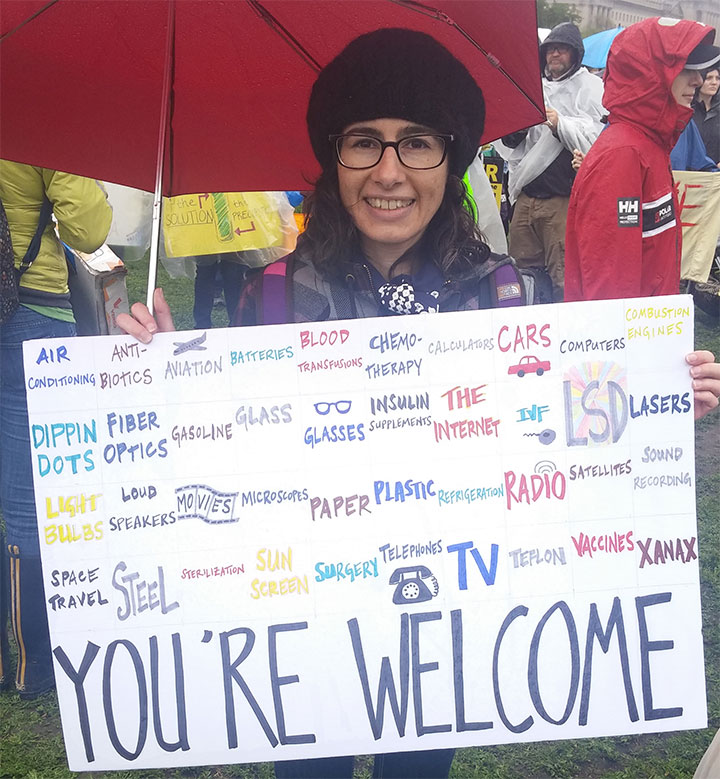
The sign of Josefa Steinhauer, from Yeshiva University in New York, sounded a common theme: the importance of basic science in enabling progress taken for granted today. Steinhauer voiced concerns that emerging U.S. government policies affecting science “don’t seem to be based on evidence and fact, and that’s very alarming.”
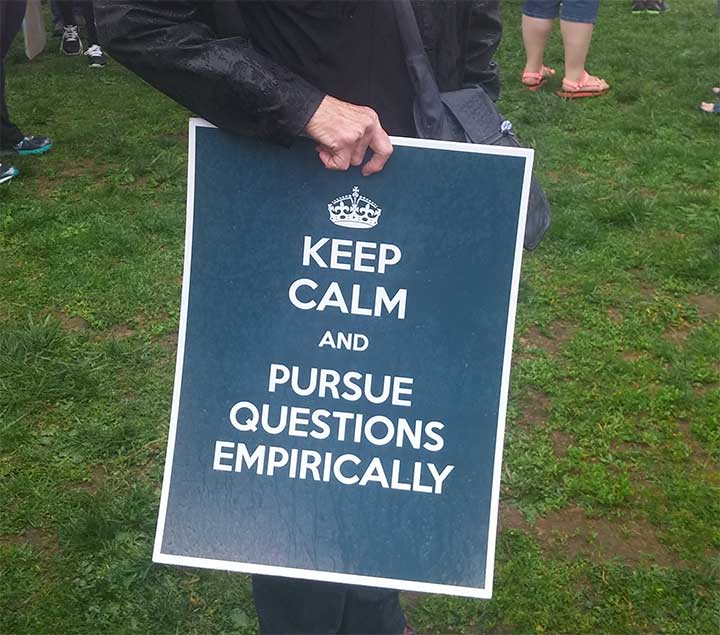
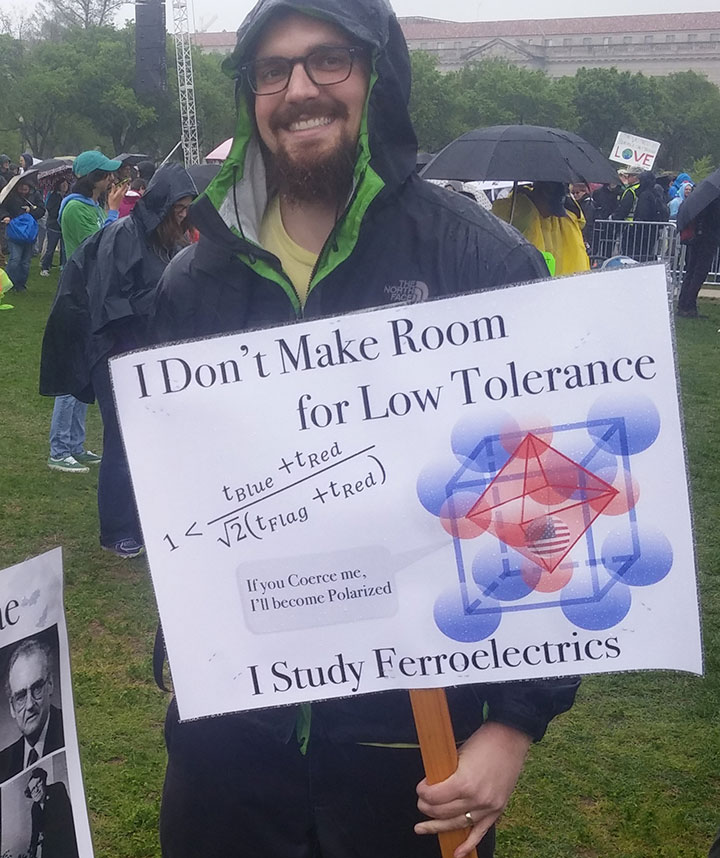
A couple of expressions seen in the pre-march rally area near the Washington Monument.
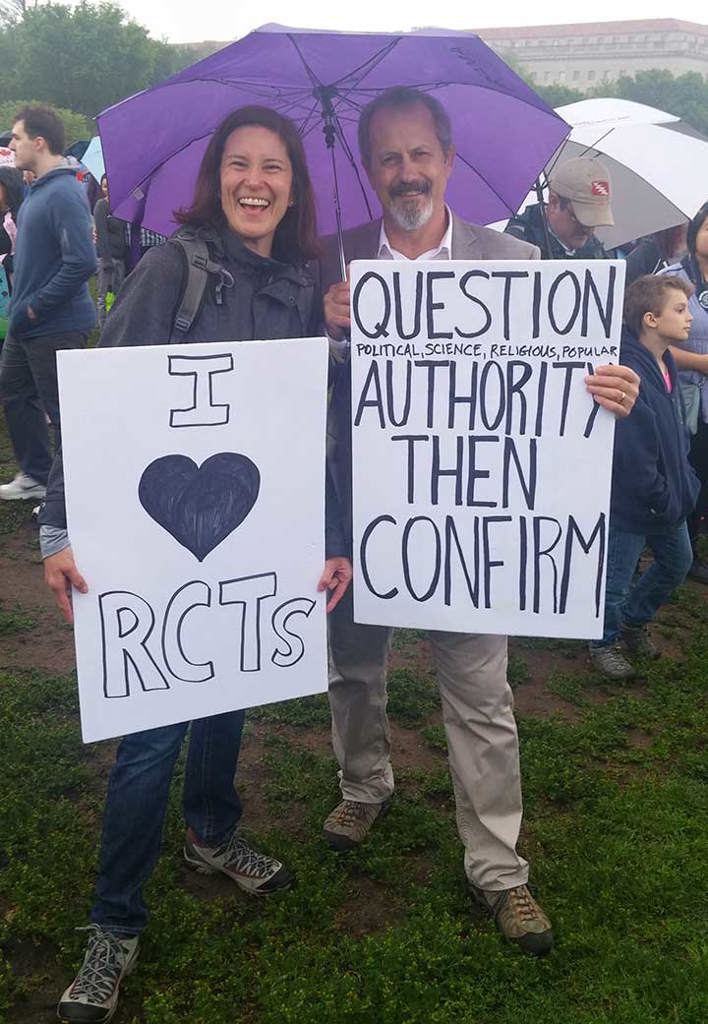
Celene Domitrovich of Georgetown University and Tom Kirsch of the Uniformed Services University, displaying their enthusiasm for randomized controlled trials and other modes of skeptical inquiry.
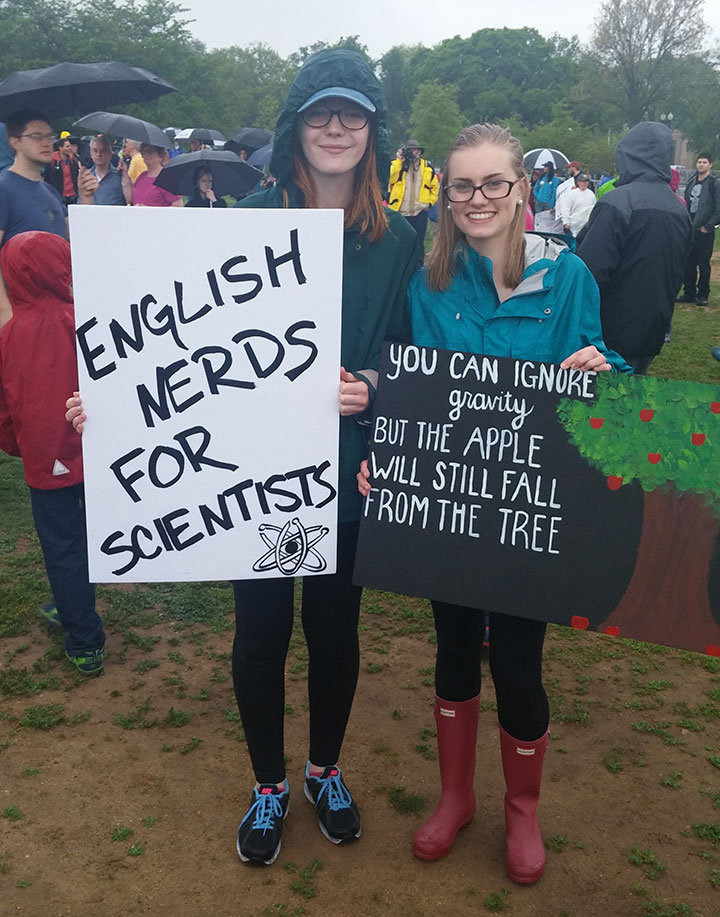
The March attracted non-scientists as well as scientists.
